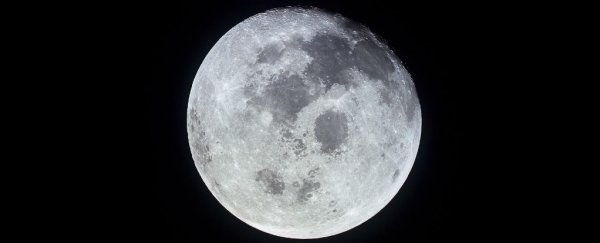The Japanese Aerospace Exploration Agency (JAXA) has announced a plan to land an unmanned spacecraft on the Moon by 2018.
If successful, Japan will join the former Soviet Union, the United States, and China as the only nations to touch down on the lunar surface - the latter accomplishing the feat most recently in 2013.
"This is an initial step and a lot of procedures are still ahead before the plan is formally approved," a JAXA spokesperson told reporters.
Right now, the mission is estimated to cost somewhere between US$83 and $125 million and is pending approval from the Japanese government. If it goes ahead, however, it could pave the way for future missions to search for mineral deposits on the Moon, and might be a stepping-stone for exploring Mars.
As Euan McKirdy from CNN explains, the plan is to develop a high-precision soft-landing technology, which could be used for future manned missions to either the Moon or Mars.
This technology will be incorporated into an unmanned probe known as the Smart Lander for Investigating Moon, or just SLIM.
JAXA spokesperson Chihito Onda told CNN the lander will use face recognition software found in digital cameras, which will be re-engineered to help the craft recognise craters on the lunar surface.
While landing a probe on the Moon isn't unprecedented, JAXA engineers say they want their SLIM probe to land within 100 metres of their target. Previous lunar landings have deviated from target landing zones by several kilometres, The Japan News notes.
In 2007, JAXA launched the Kaguya lunar orbiter, which travelled around the Moon for nearly two years, photographing the lunar surface and mapping geographical features.
In 2009, the Kaguya spacecraft photographed an enormous black cavern, about 60 to 70 metres in diameter and nearly 100 metres deep. This feature could lend support to the existence of extensive lava tubes under the Moon's surface, which would be optimal locations for future moon bases.
And according to The Japan News, the cavern might be well suited as a landing site for the SLIM probe.
Japan has proven its mettle when it comes to landing spacecraft in tricky spots. In 2005 it landed its Hayabusa (or Peregrine Falcon) probe on the near-Earth asteroid Itokawa.
If the latest mission is approved, the SLIM probe could be launched aboard one of JAXA's Epsilon rockets as early as 2018.
Sources: The Japan News, CNN
